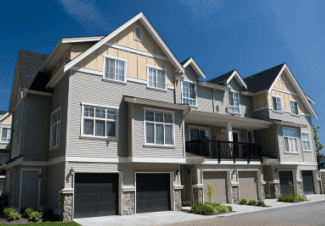Understanding Cost-Burdened Renters
One-size-fits-all policies aren’t going to help, says NMHC.

That last sentence is where things get complicated and sticky, especially in a political climate when so many want things to be so simple. Using custom tabulations of 2020 American Community Survey, NMHC identified multiple profiles of cost-burdened renters and discussed three that make up 43% of the whole category. (The categories when added together only seem to tally 42%, so the remaining 1% is likely an issue of rounding.)
Low earners are 23% of cost-burdened renters. They make too little money and “will likely never be able to afford market-rate housing without some form of financial assistance or government subsidy, no matter how inexpensive.”
Taking an example annual income of $5,634, “this household could still only afford to live in 0.4% of the two-bedroom apartments across the US and would likely still be burdened if it moved to a more inexpensive metro area.” And then they’d probably not have the money to afford the move.
“In fact, 90% of low-earner apartment households were severely cost-burdened in 2020, compared to 27% of all apartment households and 53% of all cost-burdened households,” Bruen wrote. “This indicates a deep subsidy is needed to enable them to locate an affordable unit. Metro areas with the highest shares of severely cost-burdened low-earner apartment households include Dallas-Fort Worth (97%), Las Vegas (97%), and Tampa (96%).”
Next up, geographically burdened households that compose 15% of cost-burdened households. Put colloquially, they’re in the wrong place at the wrong time. “Members of this group earn a moderate income, but because they live in more expensive markets where there is a notable supply-demand mismatch, they are housing cost burdened. If they were able to live in more inexpensive housing markets or, alternatively, if more units were built in their existing housing markets, alleviating pricing pressures, it’s likely many would not be burdened.”
Third, a surprising group: high earners. “These are very high-income apartment households who choose to pay more than 30% of their income on rent, even though more affordable housing options are available to them,” Bruen explained. “Despite appearing cost burdened, these households typically are not in need of any form of assistance; they could simply choose to live in a cheaper apartment.” But they don’t.
Unfortunately, the US government and public are particularly bad at understanding and dealing with the implications of subtlety. Some people need significant financial assistance. Some could move to less expensive local markets (which gets complicated when considering such factors as existing jobs, schooling, and family and social connections) or see more housing built in their current ones. The high earners are spending significant portions of their income on housing for personal reasons but may have enough money left over for their needs and likely have chosen “a slightly more expensive apartment, perhaps due to its size, location, or other luxury features and amenities.” They are unlikely to need financial help.
Source: GlobeSt.















 Accessibility
Accessibility